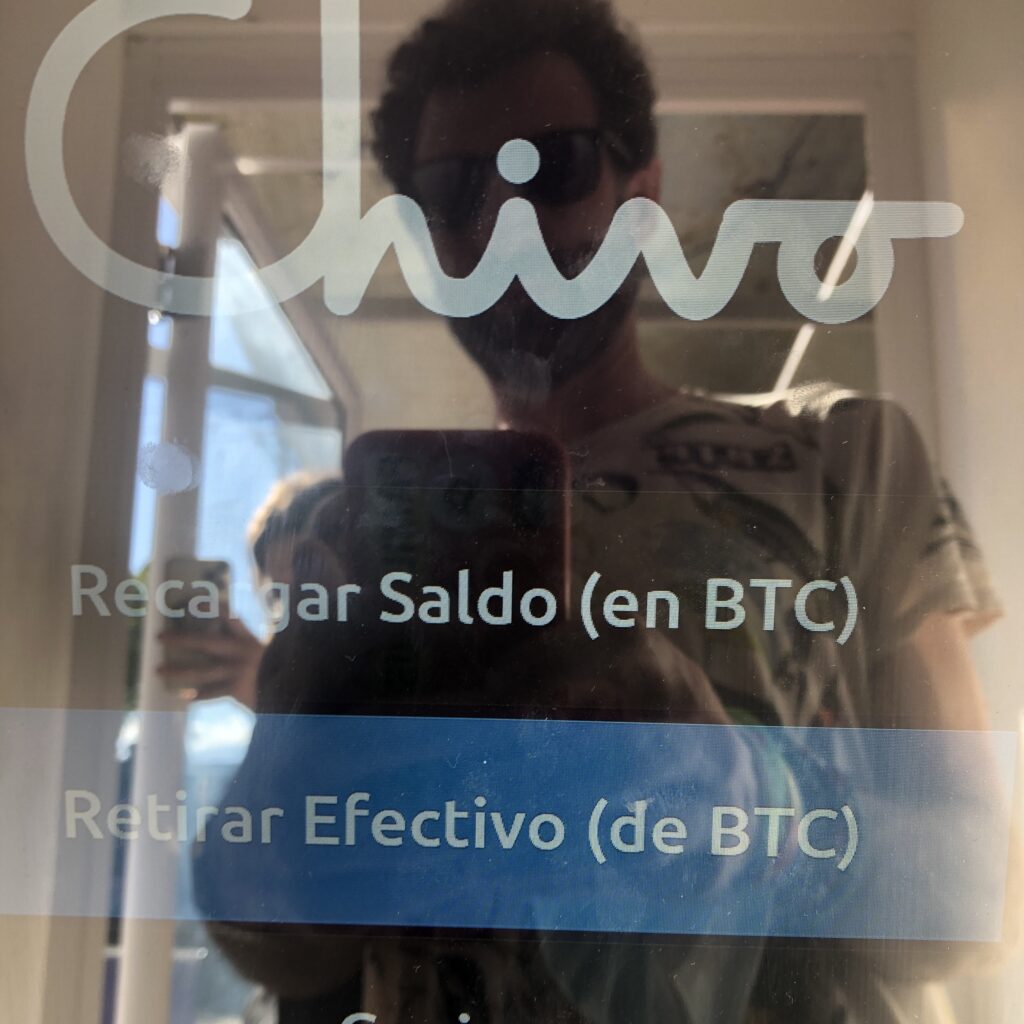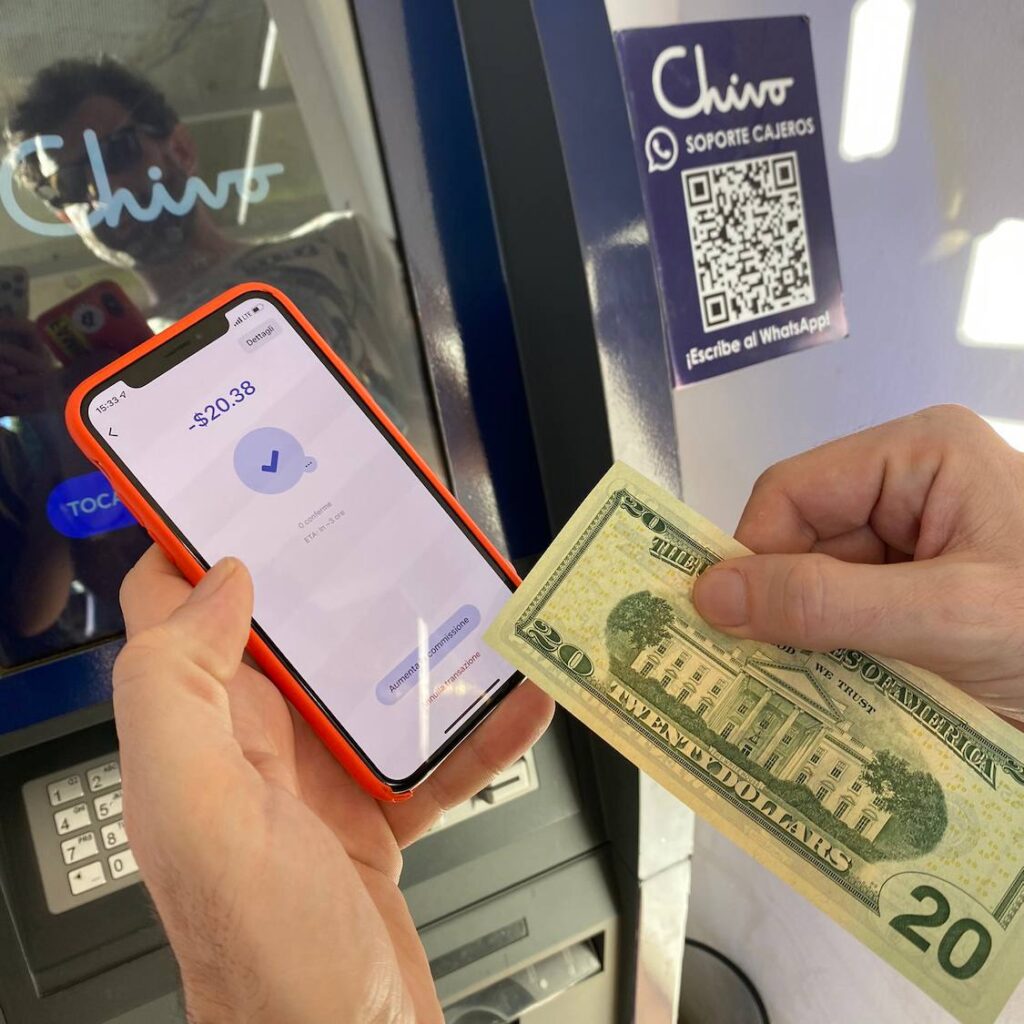- Podcast
- Supportaci
- Blog
- Shopping
- Bitcoin
- Contattaci
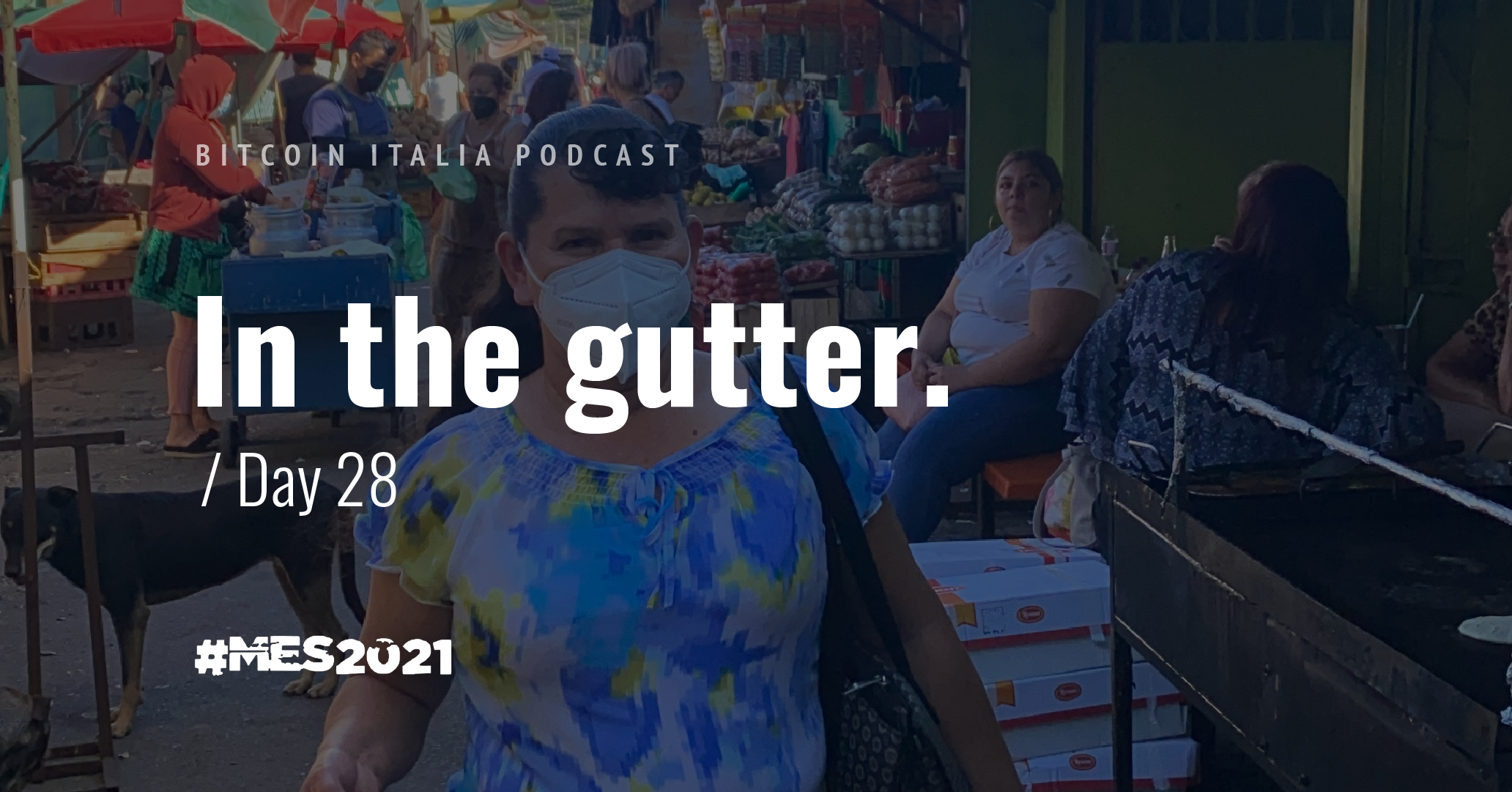
Santa Ana is our favorite city in El Salvador. We have no doubt. We feel a special connection with the people here, with the architecture, with the atmosphere on the streets.
Maybe this is what makes us feel comfortable and today we decide to go to the most popular neighborhoods. To mingle with the real Santanecos. We know that today is market day and we want to see if it is possible to pay with bitcoins there too. You don’t have to imagine the neat stalls with vociferous vendors from back home. In El Salvador they’re more like a maze of shacks piled on top of each other, with goods displayed everywhere. In the narrow streets the crowds are disorderly and the hawkers push all sorts of rusty carts. Even the asphalt becomes an opportunity to spread a tarp and pile up fruit to sell.
The general context at first intimidates us a bit. We are perhaps a little suggestible by the dirty and patched up clothes of the people and by the hard faces. But we take courage and after entering we realize that the looks are curious and the expressions towards us benevolent.
This was where we wanted to be when we left Italy. Among the things we were particularly keen to find out was whether we would be able to buy bananas from a popular hawker by paying for them in Bitcoin. We rolled up our sleeves and started asking.
The most common reactions we receive are of ridicule. People giggle. They nod at us. But we don’t give up. And we keep asking. A gentleman who sells tomatoes, with a particularly grim face, throws in a series of curses against Bukele when he hears us mention cryptocurrency. The association is always there, especially in the more modest segment of the population.
Around here there are no signs with the magic orange B and we begin to doubt, when our attention is attracted by a very noisy lady, owner of a fruit stand. When we ask her for information she starts to reason, tells us to wait and disappears into the crowd. She comes back a few minutes later and tells us that a friend of hers is on his way and has a Chivo wallet so we can get down to business. We choose some apples and grapes. After a while, a man comes in with dirty clothes and holes in them, he has an antediluvian smartphone in his hand with the app installed. He has absolutely no idea what to do, so much so that he throws the phone in our hands with an air of “you do it”. The lady watches us set the payment with a lost and not very interested expression. As if we were crazy. Notification of the transaction arrives and she hands us the bags. We grab them victoriously.
As Gene Wilder would say in Frankenstein Jr. “It can be done!”
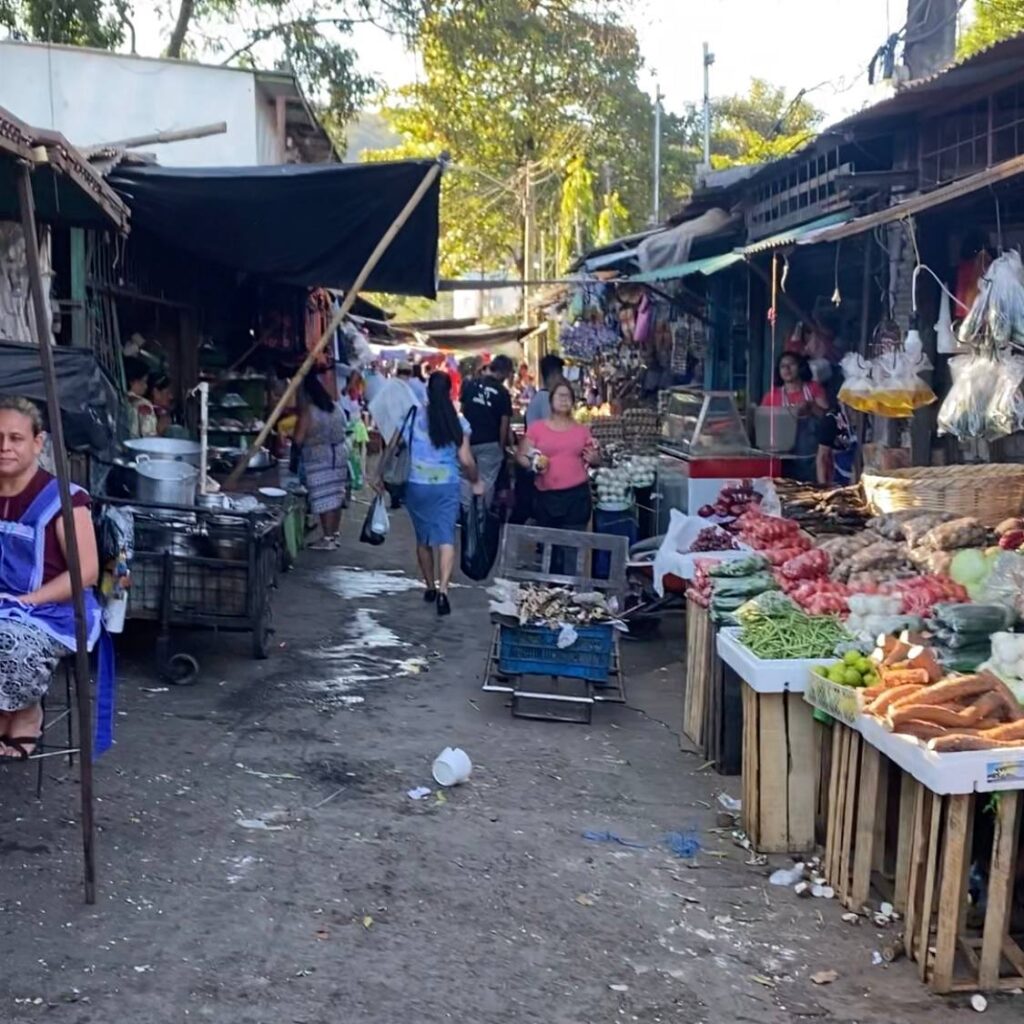
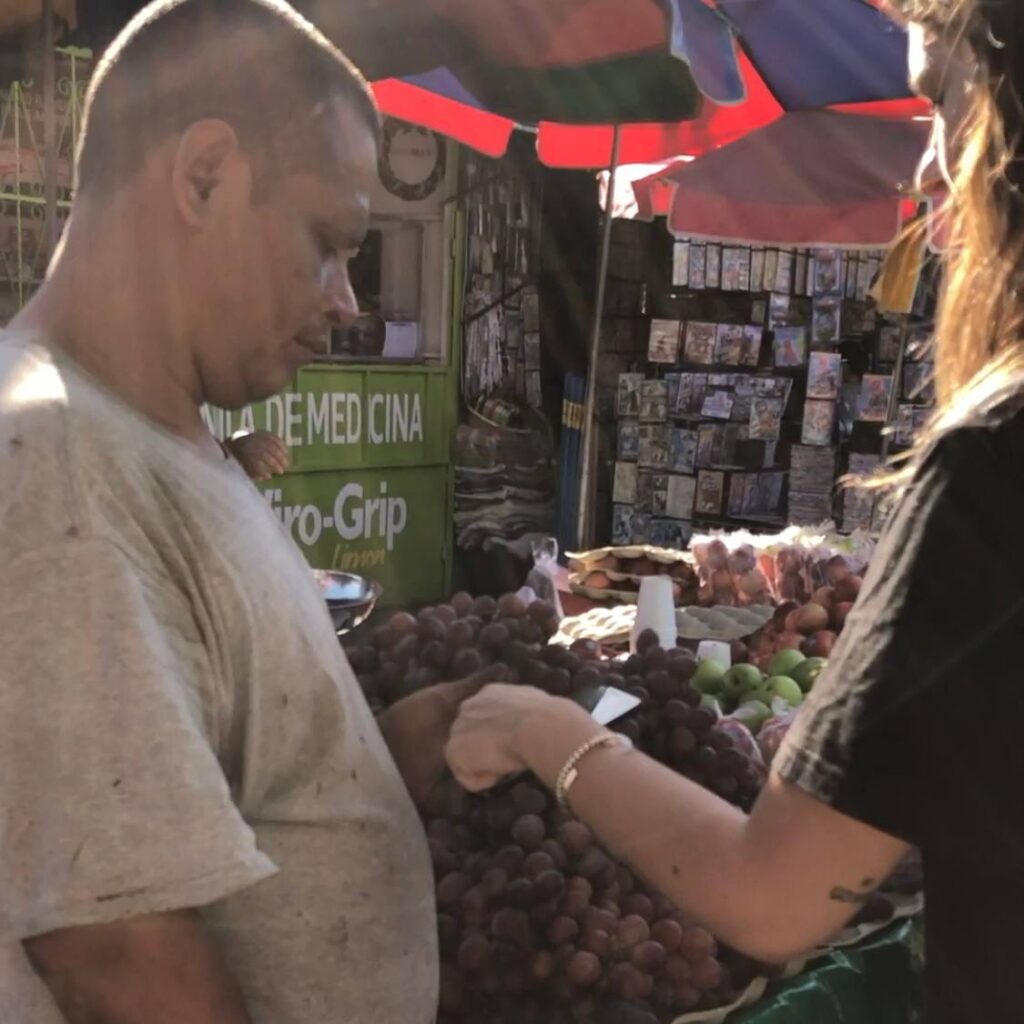
Net of our small great success, however, we cannot say that we have found interest and enthusiasm. On the contrary. In the slums life seems to go on unchanged, with its rhythms and its logic, with or without Bitcoin. Maybe we could not expect anything different, after all.
On our way home we noticed, in the middle of a square, an ATM Chivo. There is almost no one there and we are taken by curiosity. We approach it and ask the staff for information. We had been wanting to study it more closely for a while, to understand what functions it offers and to see if we, as foreigners, would be able to use it. They let us in and let us hustle.
It has a low-tech, somewhat 1990s feel to it and a terrible graphic interface. The first thing it asks you is to enter a phone number, which can be Salvadoran or international, on which you will be sent a code to enter in the machine to access the functions. It’s used to verify identity, we immediately guess. Once the code is entered the options are two: recharge the balance in BTC and withdraw cash by selling BTC. We select the second one. We try to see if it gives us 20$. We choose the amount and the machine shows us the QR code. We scan it, confirm the sending on our wallet and, to our surprise, Chivo dispenses the cash instantly. Without even waiting for the first confirmation on chain. A little confused, we left clutching our first banknote in almost a month.
We check our wallet. The transaction is still in the mempool. It is not written to the blockchain. Now, here’s the thing. I use Blue Wallet which I find very convenient because of the replace-by-fee (RBF) feature. It’s a technology that allows you to modify a transaction that has already been sent to the network by increasing its fees so that it is written into the blockchain as soon as possible. However, this system also allows a transaction that has already been sent to be replaced with a blank one, effectively cancelling it. Usually ATMs issue a receipt that allows you to withdraw cash only when the transaction is finalized and written in the blockchain. Chivo, by paying immediately, therefore exposes himself to be cheated by all those wallets that thanks to RBF can cancel transactions when they are still waiting for confirmation. A glaring bug. Huge.
We imagine it’s taken for granted that the identity of the wrongdoer can be traced through the phone number, but as we mentioned at the beginning of our diary, we bought three local sim cards in bitcoin in a transaction that had the vague flavor of black market and without providing anyone with documents. If it was that easy for us we imagine it would be child’s play for a local with bad intentions. That Chivo’s ATMs have such an obvious vulnerability is frankly inexplicable. The fact that the issue has not yet been resolved would seem to confirm the rumor we received that whoever supplied the machines is no longer able to update their firmware. We wonder how many dollars have been diverted from the State of El Salvador using this method.
